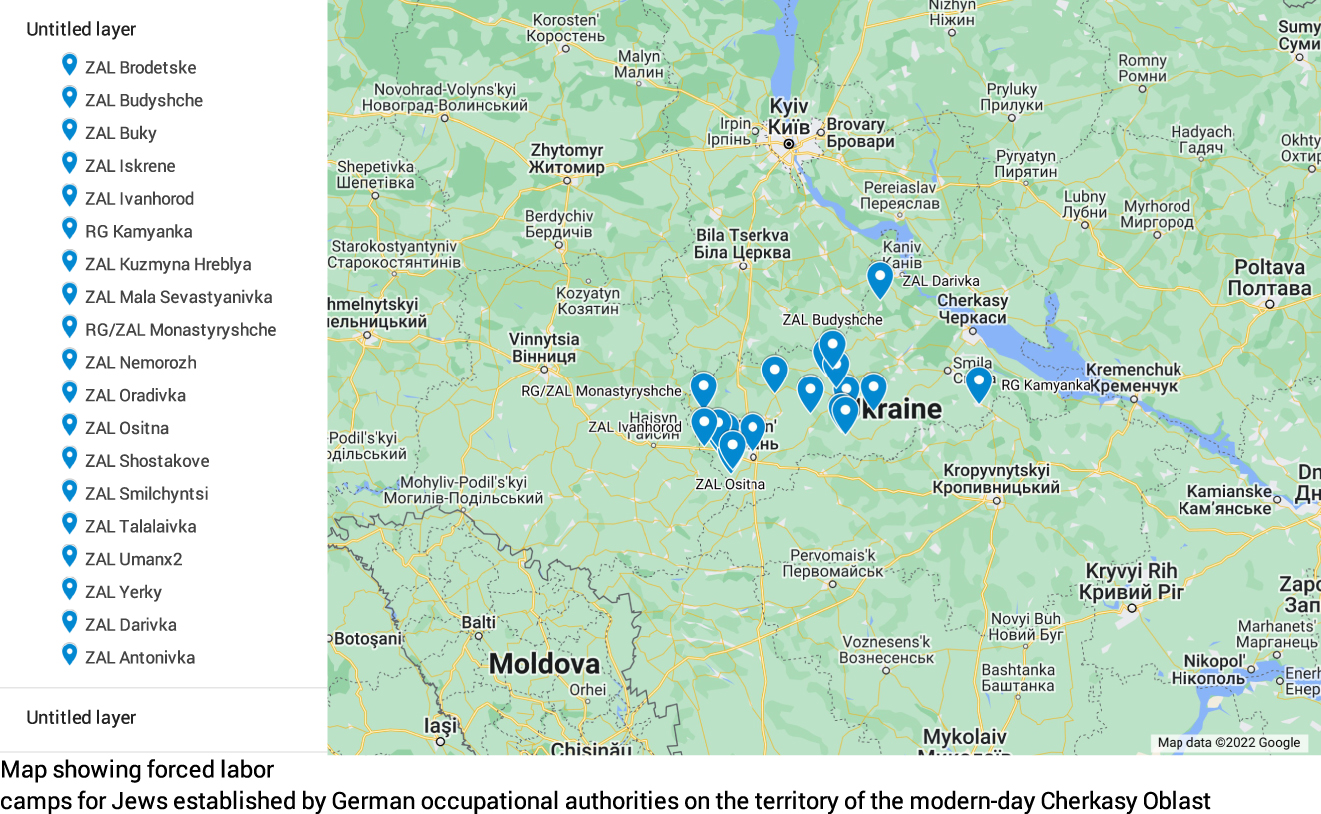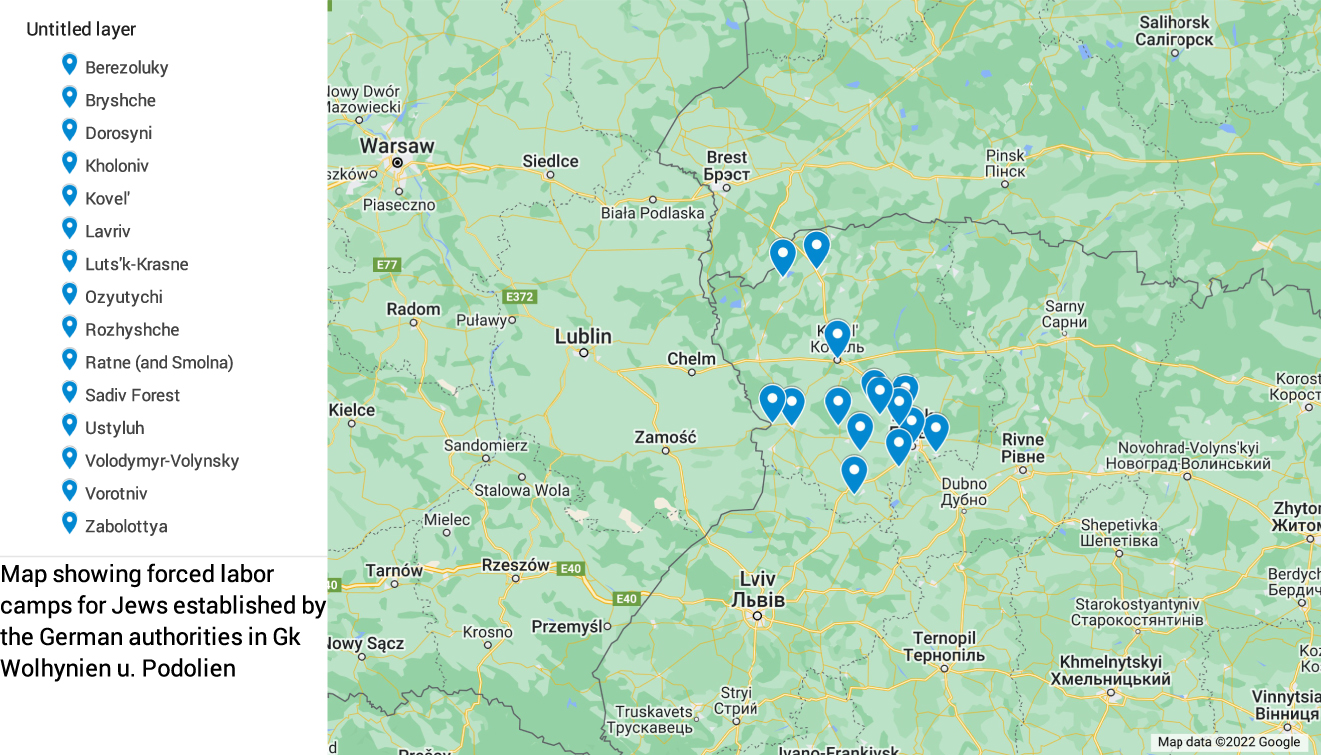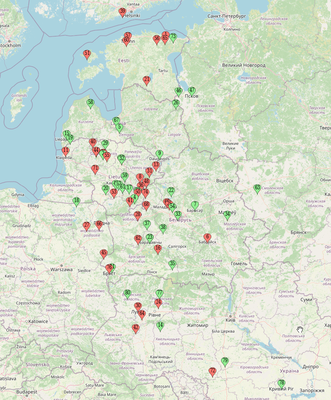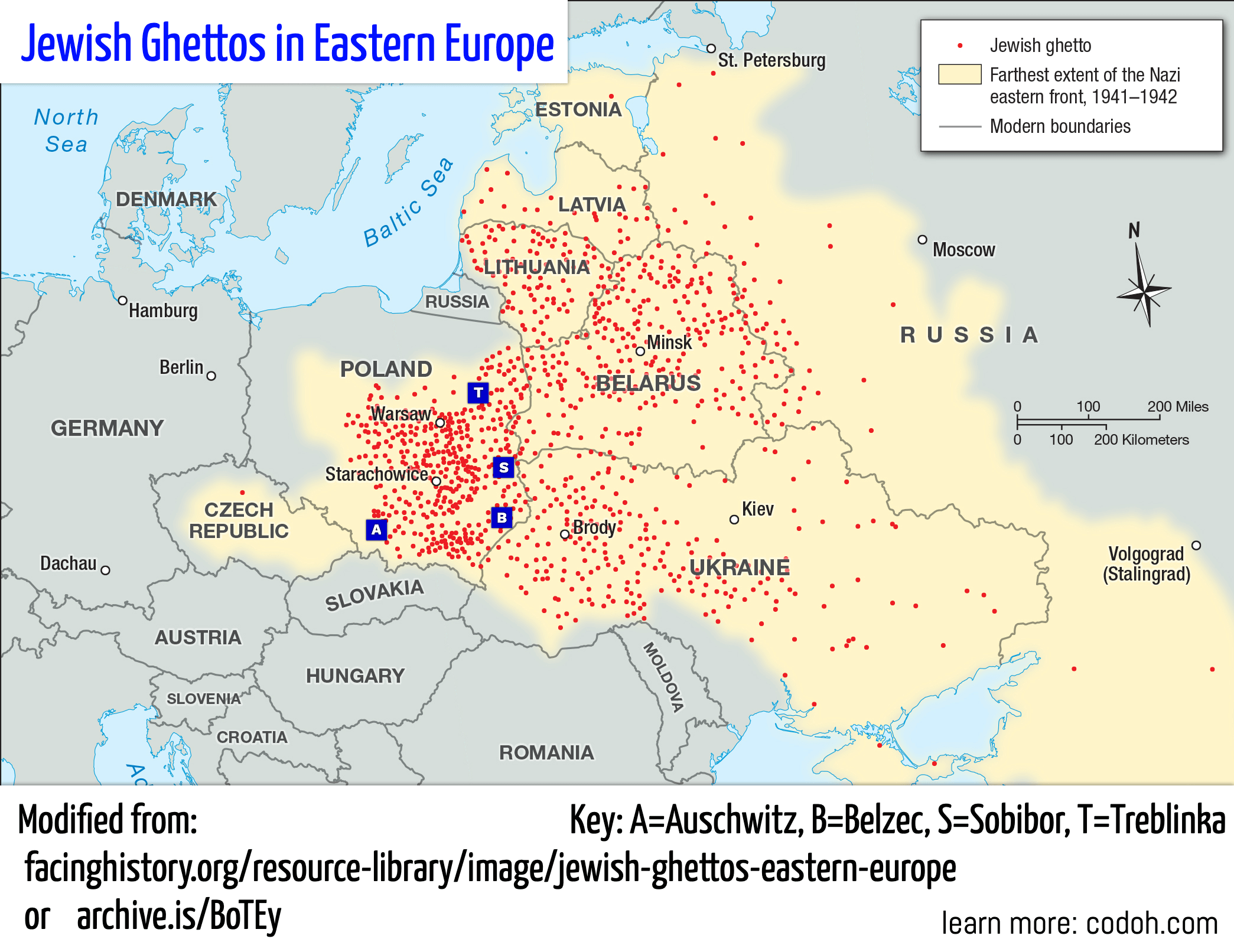Aseri, Estonia {4031}
Bačiūnai, Lithuania {4056, 4057} <green>
Baranovichi, Belarus {4109, 4108, 4110} <green>
Baltoji Vokė, Lithuania {4058, 4059} <green>
Misa, Latvia {4153, 4152, 4039 -- 4032 and 4147 are Bisa, "presumably Misa"} <green>
Babruysk, Belarus {4111}
Barysaw, Belarus {4112, 4113} <green>
Kmeliauka, Lithuania {4138}
Daugavpils, Latvia {4033, 4148} <green>
Daugėliai, Lithuania {4060}
Dimitravas, Lithuania {4061}
Staniūnai, Lithuania {4062}
Dūkštas, Lithuania {4063}
Dvirets, Ukraine {4114, 4115} <green>
Gavieze, Latvia {4149, 4034} <green>
Hantsavichy, Belarus {4116}
Vievis, Lithuania {4067, 4068} <green>
Zaozernoe, Russia {4066, 4065} <green>
Kalēti, Latvia {4036, 4150} <green>
Kazlų Rūda, Lithuania {4069, 4070} <green>
Kärstna, Estonia {4037}
Kniahinin, Belarus {4118, 4117} <green>
Baranovichi, Belarus {4120, 4119; Koldychevo, mapped as Baranovichi for nearest mappable area} <green>
Kostopil', Rivne Oblast, Ukraine {4139}
Krasnoye, Belarus {4121}
Kūdupe, Latvia {4151, 4038} <green>
Kudłaczewo, 19-222, Poland {4122}
Lida, Belarus {4123}
Linkaiciai, Lithuania {4072, 4073} <green>
Lutsk, Volyn Oblast, Ukraine {4140}
Linkmenys, Lithuania {4074}
Staniūnai, Lithuania {4076, 4075} <green>
Minsk, Belarus {4125, 4124} <green>
Mogilev, Belarus {4126, 4127} <green>
Mokrovo, Belarus {4041, 4040} <green>
Nemenčinė, Lithuania {4077}
Navahrudak, Belarus {4129, 4128} <green>
Świerżeń Nowy, Belarus {4130, 4131} <green>
Kirkkonummi, Finland {4042; Oivari, mapped as Kirkkonummi for nearest mappable area}
Akmenė, Lithuania {4078}
Valkininkai, Lithuania {4079}
Orany, Ukraine {4080}
Palemonas, Kaunas, Lithuania {4081, 4082} <green>
Pavenčiai, Kuršėnai, Lithuania {4083}
Jelonka, Poland {4141; est. location of Pereweredow but uncertain}
Pechory, Pskov Oblast, Russia {4043, 4044} <green>
Pskov, Pskov Oblast, Russia {4045, 4046} <green>
Pabradė, Lithuania {4084}
Panevėžys, Lithuania {4087, 4086} <green>
Vilnius International Airport {4088; Porubanek est. location}
Puski, Estonia {4047}
Pravieniškės, Lithuania {4090, 4089} <green>
Prienai, Prienai District Municipality, Lithuania {4091}
Radaškovičy, Belarus {4132, 4133} <green>
Radviliškis, Lithuania {4092}
Rakvere, Estonia {4053}
Tallinn, Estonia {4048}
Roja, Latvia {4154, 4049} <green>
Riešė, Vilnius District Municipality, Lithuania {4094, 4095} <green>
Saku, Estonia {4050}
Žiežmariai, Lithuania {4097, 4096} <green>
Slonim, Belarus {4134}
Smolensk, Smolensk Oblast, Russia {4135, 4142, 4143; includes Smolno} <green>
Smordva, Rivne Oblast, Ukraine, 35160 {4144}
Sonda, Estonia {4051}
Suchowola, Poland {4145}
Zemgale, Rīga, Latvia {4155, 4052} <green>
Troki, Belarus {4098}
Уша, Belarus {4136}
Vilnius, Lithuania {4103, 4101, 4102, 4100; includes Wieliczany with its precise location unknown} <green>
Viduklė, Lithuania {4099}
Vinnytsia, Vinnytsia Oblast, Ukraine, 21000 {4146}
Kohtla-Järve, Estonia {4054, 4055; Wiwikond} <green>
Užtilčiai, Lithuania {4106; Zaczepka}
Zokniai, Lithuania {4107}
Brest, Belarus {4137}
Rivne, Ukraine {Approx. site of at least ten (10) camps, per Dean, M. (2022), see:
https://doi.org/10.1515/eehs-2022-0002} <green>
Kryvyi Rih, Ukraine {Approx. site of at least nine (9) camps, per Dean, M. (2022), see:
https://doi.org/10.1515/eehs-2022-0002} <green>
Uman', Ukraine {Approx. site of at least 20 camps, per Dean, M. (2022), see:
https://doi.org/10.1515/eehs-2022-0002} <green>
Kovel', Ukraine {Approx. site of at least 15 camps, per Dean, M. (2022), see:
https://doi.org/10.1515/eehs-2022-0002} <green>
Teĺmy-1, Belarus {Approx. site of at least 12 camps, per Dean, M. (2022), see:
https://doi.org/10.1515/eehs-2022-0002} <green>


















